Zero Waste for All? Sustainable Practices in a Small-Scale Zero Waste Community from a Universal Design Perspective
Abstract
1. Introduction
- The aim of this paper is to contribute to an enhanced understanding of zero waste in practice through the lens of universal design by exploring how Kamikatsu has shaped itself around the concept of zero waste. The research questions are:
- What initiatives have contributed to the design of the zero-waste concept in Kamikatsu?
- What are the opportunities and challenges of applying the zero-waste concept in practice from a universal design perspective?
2. Theoretical Aspects of Zero Waste and Universal Design
- Body fit—a designed environment must welcome different body sizes and abilities.
- Comfort—a designed environment should ensure comfort.
- Awareness—information must be designed to be easily perceived.
- Understanding—the use of a design solution must be intuitive.
- Wellness—the design should contribute to health promotion.
- Social Integration—a design should ensure that it treats all with dignity and respect.
- Personalization—it should incorporate opportunities for individual preferences.
- Cultural Appropriateness—any design must respect and reinforce the social and environmental contexts [27].
3. Materials and Methods
3.1. Interviews with Photo Documentation
3.2. Analysis Strategy and Process
4. Results
4.1. Design for a Lifestyle Shift
When I moved to the house, there was a large barrel in the backyard where everything was burned. There was a lot of ash and smoke. I remember it smelled so bad, especially all the plastic burning. Respondent 3.
It is time to change our needs and our lifestyles. Zero waste is starting something new and seeing where it takes us. Respondent 5.
- Identify a common idea of change.
- Formulate goals to improve the living environment.
- Arrange meetings with the residents and communicate the new situation.
- Inspire residents by inviting a famous role model.
- Introduce a zero-waste declaration.
4.2. Design of Norm Change
It’s not just about picking up garbage, it is about ensuring everyone’s well-being. Respondent 2.
Zero waste can be expressed by “mottainai”, a concept Japanese people use in daily life to express the important value something holds (…) a chance to reflect on our consumption patterns, life design, and interaction with our natural surroundings. Respondents 6 and 7.
In the municipality, it is like a rule to sort and follow the system. Respondent 1.
We create a system that makes it possible for people to learn about zero waste and environmental issues. Respondent 2.
If everything were sorted at home, it would end up in 43 categories. That is why some categories are mixed at home to make it possible to bring everything in the car to the Zero Waste Center. Respondent 4.
- Define principles for residents to live by.
- Outline a suggested ZW lifestyle.
- Design and implement a supportive structure.
- Appoint an organization to promote measures to achieve zero waste.
- Provide care to the residents participating in the concept.
4.3. Design of Co-Located Experiences
I have heard that people have moved here because of zero waste, but also because of the leef industry, the Big Eye company, and the hotel WHY, which might attract a younger generation. Respondent 4.
It is a chance to reflect on our consumption patterns, life design, and interaction with our natural surroundings. Respondent 7.
It is about a mindset of ‘let’s not waste’—that relates to how we live life (respondent 7).
- Design a facility as a multimodal experience of the concept.
- Use visibility, such as signs and visual identity, to manifest the zero-waste concept.
- Design with reused items from the region to show waste as a resource.
- Visualize the significance of education and communication in sustainability issues.
- Position co-location as a marketing idea to attract national and global attention.
4.4. Design of an Incentive System
Everyone who moves to the municipality receives a grant to buy an electric garbage disposer. The price is 10,000 yen instead of 50,000 yen.Respondent 2.
- Bulk sale: residents brought their own cans to the local stores.
- No plastic bags: residents brought their own bags.
- Optimized sorting: residents received points depending on how they sorted.
The point system aims to encourage sorting and to reduce incinerated and landfilled waste. Respondent 2.
On the first day, Town Hall introduced 18 categories. I followed that instruction. The first day, I brought easy material to sort, paper, and combustible material. From the beginning it was a lot to learn, all the different categories. Respondent 4.
We have bins in every room at home, totally 20. Respondent 3.
- Make a plan for reduce, reuse, and recycle.
- Design a structure for a reward system.
- Create incentives to nudge residents.
- Reward sustainable behavior and sorting.
- Communicate clear and accessible messages on measurement.
4.5. Design of a Self-Awareness Routine
That relates to the way we live life and to the garbage that is produced … to understand that there is no such thing as waste, only resources. Respondents 6 and 7.
- Learning moments for self-esteem.
- Hands-on activities to reflect upon lifestyle.
- Social learning teams for common reflection.
- Storytelling on sustainable development on-site.
- Hotel accommodation as a test site for the zero-waste concept.
5. Discussion
5.1. The Domain: Zero Waste as Evolution—A Norm Driven Change
5.2. The Practice: Zero Waste as Excitement—Incentives for Motivation
5.3. The Community: Zero Waste as Aliveness—A Construction for Interaction
6. Conclusions
Author Contributions
Funding
Institutional Review Board Statement
Informed Consent Statement
Data Availability Statement
Acknowledgments
Conflicts of Interest
References
- Zhang, Z.; Chen, Z.; Zhang, J.; Liu, Y.; Chen, L.; Yang, M.; Osman, A.I.; Farghali, M.; Liu, E.; Hassan, D.; et al. Municipal Solid Waste Management Challenges in Developing Regions: A Comprehensive Review and Future Perspectives for Asia and Africa. Sci. Total Environ. 2024, 930, 172794. [Google Scholar] [CrossRef] [PubMed]
- Cottom, J.W.; Cook, E.; Velis, C.A. A Local-to-Global Emissions Inventory of Macroplastic Pollution. Nature 2024, 633, 101–108. [Google Scholar] [CrossRef] [PubMed]
- Shenyoputro, K.; Jones, T.E. Reflections on a Two-Decade Journey toward Zero Waste: A Case Study of Kamikatsu Town, Japan. Front. Environ. Sci. 2023, 11, 1171379. [Google Scholar] [CrossRef]
- Rockström, J.; Gupta, J.; Qin, D.; Lade, S.J.; Abrams, J.F.; Andersen, L.S.; Armstrong McKay, D.I.; Bai, X.; Bala, G.; Bunn, S.E.; et al. Safe and Just Earth System Boundaries. Nature 2023, 619, 102–111. [Google Scholar] [CrossRef]
- Almansour, M.; Akrami, M. Towards Zero Waste: An In-Depth Analysis of National Policies, Strategies, and Case Studies in Waste Minimisation. Sustainability 2024, 16, 10105. [Google Scholar] [CrossRef]
- Bogusz, M.; Matysik-Pejas, R.; Krasnodębski, A.; Dziekański, P. The Concept of Zero Waste in the Context of Supporting Environmental Protection by Consumers. Energies 2021, 14, 5964. [Google Scholar] [CrossRef]
- Braungart, M.; McDonough, W.; Bollinger, A. Cradle-to-Cradle Design: Creating Healthy Emissions—A Strategy for Eco-Effective Product and System Design. J. Clean. Prod. 2007, 15, 1337–1348. [Google Scholar] [CrossRef]
- Ali, S.; Shirazi, F. The Paradigm of Circular Economy and an Effective Electronic Waste Management. Sustainability 2023, 15, 1998. [Google Scholar] [CrossRef]
- Zaman, A. Zero-Waste: A New Sustainability Paradigm for Addressing the Global Waste Problem. In The Vision Zero Handbook: Theory, Technology and Management for a Zero Casualty Policy; Edvardsson Björnberg, K., Hansson, S.O., Belin, M.-Å., Tingvall, C., Eds.; Springer International Publishing: Cham, Switzerland, 2023; pp. 1195–1218. ISBN 978-3-030-76505-7. [Google Scholar]
- Connell, B.R.; Jones, M.; Mace, R.; Mueller, J.; Mullik, A.; Ostroff, E.; Sanford, J.; Steinfeld, E.; Story, M.; Vanderheiden, G. The Principles of Universal Design; The Center for Universal Design: Raleigh, NC, USA, 1997. [Google Scholar]
- Mace, R. Universal Design: Barrier Free Environments for Everyone. Des. West 1985, 33, 147–152. [Google Scholar]
- Hariram, N.P.; Mekha, K.B.; Suganthan, V.; Sudhakar, K. Sustainalism: An Integrated Socio-Economic-Environmental Model to Address Sustainable Development and Sustainability. Sustainability 2023, 15, 10682. [Google Scholar] [CrossRef]
- Humes, E. Garbology: Our Dirty Love Affair with Trash; Penguin: New York, NY, USA, 2013; ISBN 1-58333-523-4. [Google Scholar]
- Herrador, M.; de Jong, W.; Nasu, K.; Granrath, L. The Rising Phenomenon of Circular Cities in Japan. Case Studies of Kamikatsu, Osaki and Kitakyushu. Sci. Total Environ. 2023, 894, 165052. [Google Scholar] [CrossRef] [PubMed]
- Lee, M.Y.H.; Inuma, J.M. Cliamate Solutions Postcard from Kamikatsu Japan’s Zero Waste Town. The Washington Post, 27 April 2022. [Google Scholar]
- The Ministry of the Environment Municipal Solid Waste Generation and Disposal in FY2022; Ministry of the Environment Government of Japan: Tokyo, Japan, 2024.
- Pietzsch, N.; Ribeiro, J.L.D.; de Medeiros, J.F. Benefits, Challenges and Critical Factors of Success for Zero Waste: A Systematic Literature Review. Waste Manag. 2017, 67, 324–353. [Google Scholar] [CrossRef]
- Lid, I.M. Universal Design and Disability: An Interdisciplinary Perspective. Disabil. Rehabil. 2014, 36, 1344–1349. [Google Scholar] [CrossRef]
- Connett, P. The Zero Waste Solution: Untrashing the Planet One Community at a Time; Chelsea Green Publishing: Chelsea, VT, USA, 2013; ISBN 978-1-60358-490-6. [Google Scholar]
- Zaman, A.U. A Comprehensive Review of the Development of Zero Waste Management: Lessons Learned and Guidelines. J. Clean. Prod. 2015, 91, 12–25. [Google Scholar] [CrossRef]
- Palmer, P. Getting to Zero Waste; Purple Sky Press: Atlanta, GA, USA, 2004; ISBN 0-9760571-0-7. [Google Scholar]
- Anastas, P.T.; Zimmerman, J.B. Chapter 2 The Twelve Principles of Green Engineering as a Foundation for Sustainability. In Sustainability Science and Engineering; Abraham, M.A., Ed.; Elsevier: Amsterdam, The Netherlands, 2006; Volume 1, pp. 11–32. ISBN 1871-2711. [Google Scholar]
- Hannon, J.; Zaman, A.U. Exploring the Phenomenon of Zero Waste and Future Cities. Urban Sci. 2018, 2, 90. [Google Scholar] [CrossRef]
- Carrico, M.; Kim, V. Expanding Zero-Waste Design Practices: A Discussion Paper. Int. J. Fash. Des. Technol. Educ. 2014, 7, 58–64. [Google Scholar] [CrossRef]
- Lombardi, E.; Bailey, K. The Community Zero Waste Roadmap; Eco-Cycle Soutions: Bolder, CO, USA, 2015. [Google Scholar]
- Toner, J.; Desha, C.; Reis, K.; Hes, D.; Hayes, S. Integrating Ecological Knowledge into Regenerative Design: A Rapid Practice Review. Sustainability 2023, 15, 13271. [Google Scholar] [CrossRef]
- Steinfeld, E.; Maisel, J. Universal Design: Creating Inclusive Environments; John Wiley & Sons: Hoboken, NJ, USA, 2012; ISBN 0-470-39913-9. [Google Scholar]
- Kose, S. From Barrier-Free to Universal/Inclusive Design: How Far Have We Progressed During These 60 Years in Japan? In Studies in Health Technology and Informatics; Verma, I., Ed.; IOS Press: Amsterdam, The Netherlands, 2021; ISBN 978-1-64368-190-0. [Google Scholar]
- Wenger, E. Communities of Practice: Learning as a Social System. Syst. Think. 1998, 9, 2–3. [Google Scholar] [CrossRef]
- Wenger, E.; McDermott, R.; Snyder, W.M. Seven Principles for Cultivating Communities of Practice. Cultiv. Communities Pract. A Guide Manag. Knowl. 2002, 4, 1–19. [Google Scholar]
- Wenger-Trayner, E.; Wenger-Trayner, B.; Reid, P.; Bruderlein, C. Communities of Practice Within and Across Organizations—A Guidebook, 2nd ed.; Social Learning Lab: Sesimbra, Portugal, 2023; ISBN 978 989 53290 5 2. [Google Scholar]
- Kose, S. Toward Inclusive Public Transportation: Rights, Not Privileges; Springer: Cham, Switzerland, 2018; p. 350. ISBN 978-3-319-60596-8. [Google Scholar]
- United Nations Convention On The Rights of Persons with Disabilities (CRPD). Available online: https://social.desa.un.org/issues/disability/crpd/convention-on-the-rights-of-persons-with-disabilities-crpd (accessed on 14 December 2024).
- Brundtland Commission. Report of the World Commission on Environment and Development: Our Common Future; Brundtland Commission: Geneva, Switzerland, 1987. [Google Scholar]
- Yin, R.K. How to Do Better Case Studies. In The SAGE Handbook of Applied Social Research Methods; Sage: Thousand Oaks, CA, USA, 2009; Volume 2. [Google Scholar]
- Kamikatsu Town. In Toward Realizing a Sustainable Town—Kamikatsu Zero Waste Initiative; Kamikatsu Town: Kamikatsu, Japan, 2021.
- Esaiasson, P.; Gilljam, M.; Oscarsson, H.; Towns, A.E.; Wängnerud, L. Metodpraktikan: Konsten Att Studera Samhälle, Individ Och Marknad; Wolters Kluwer: Stockholm, Sweden, 2017; ISBN 978-91-39-11515-1. [Google Scholar]
- Alvinius, A.; Borglund, A.; Larsson, G. Tematisk Analys: Din Handbok till Fascinerande Vetenskap; Upplaga 1; Studentlitteratur: Lund, Sweden, 2023; ISBN 978-91-44-15102-1. [Google Scholar]
- Braun, V.; Clarke, V. Using Thematic Analysis in Psychology. Qual. Res. Psychol. 2006, 3, 77–101. [Google Scholar] [CrossRef]
- Hagbert, P.; Finnveden, G.; Feuhrer, P.; Svenfelt, Å.; Alfredsson, E.; Aretun, Å.; Bradley, K.; Callmer, Å.; Fauré, E.; Gunnarsson-Östling, U.; et al. Futures Beyond GDP Growth: Final Report from the Research Program “Beyond GDP Growth: Scenarios for Sustainable Building and Planning”; TRITA-ABE-RPT; KTH: Stockholm, Sweden, 2019; p. 57. [Google Scholar]
- Isaksson, K.; Hagbert, P. Institutional Capacity to Integrate ‘Radical’ Perspectives on Sustainability in Small Municipalities: Experiences from Sweden. Environ. Innov. Soc. Transit. 2020, 36, 83–93. [Google Scholar] [CrossRef]
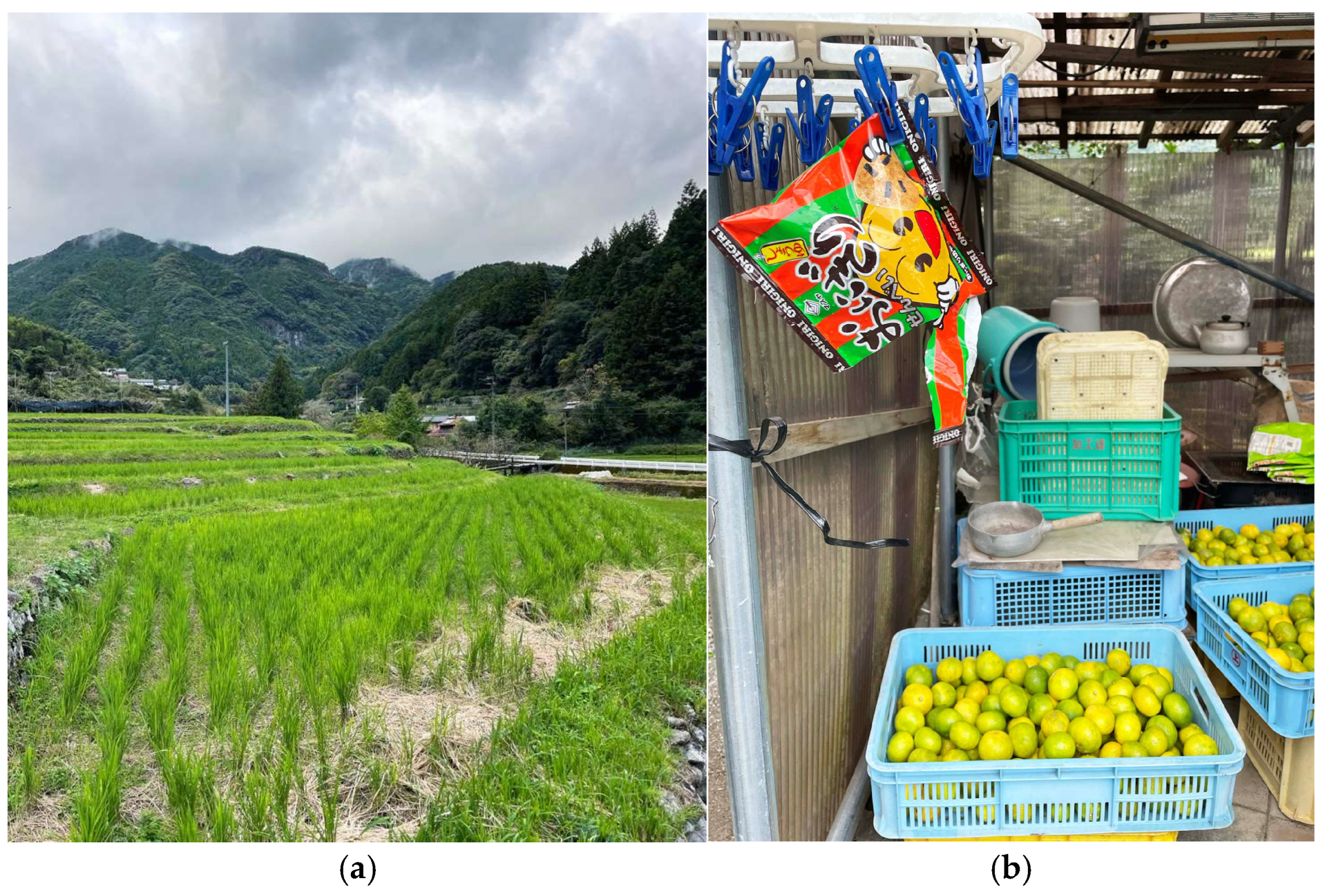

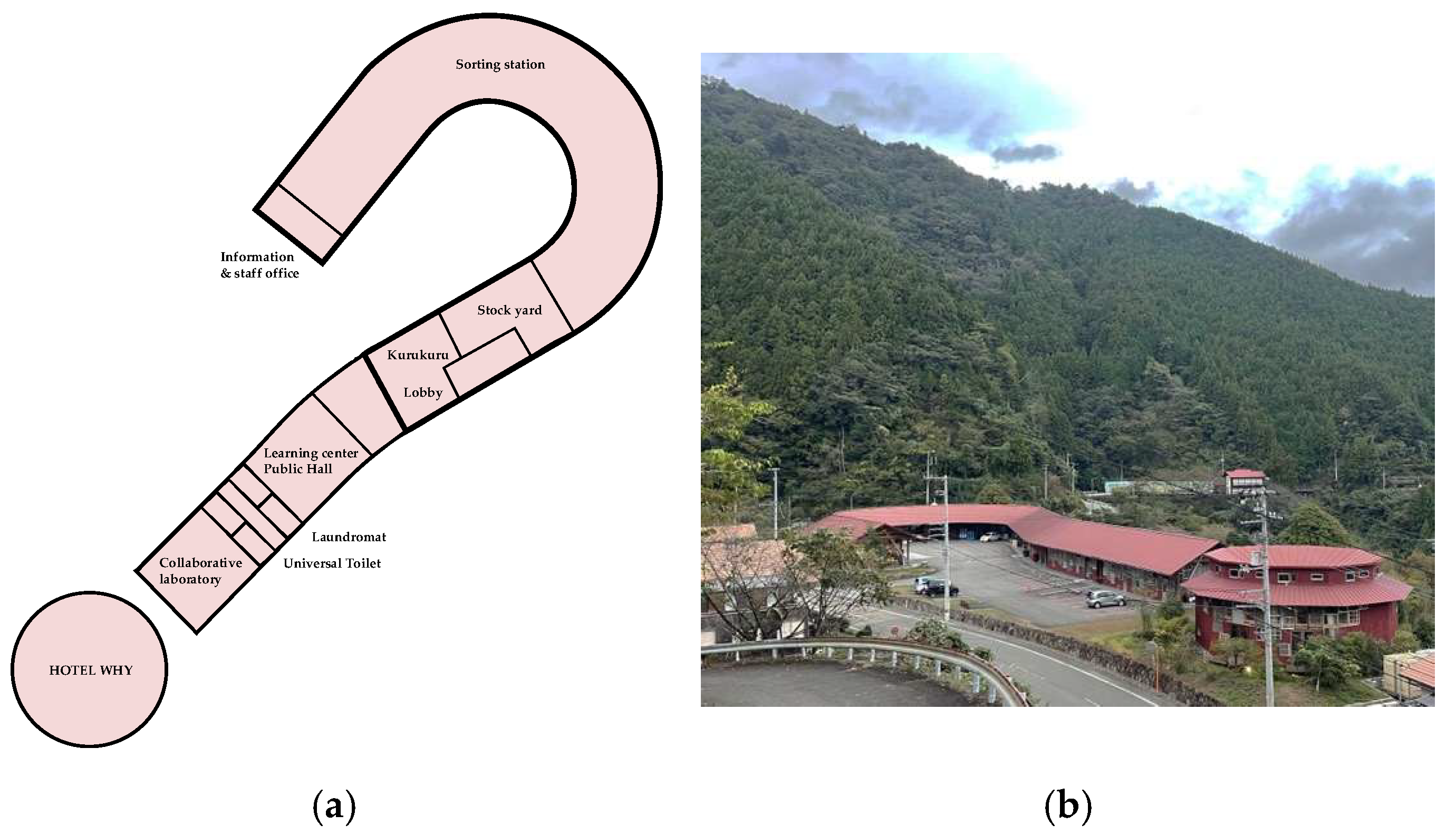

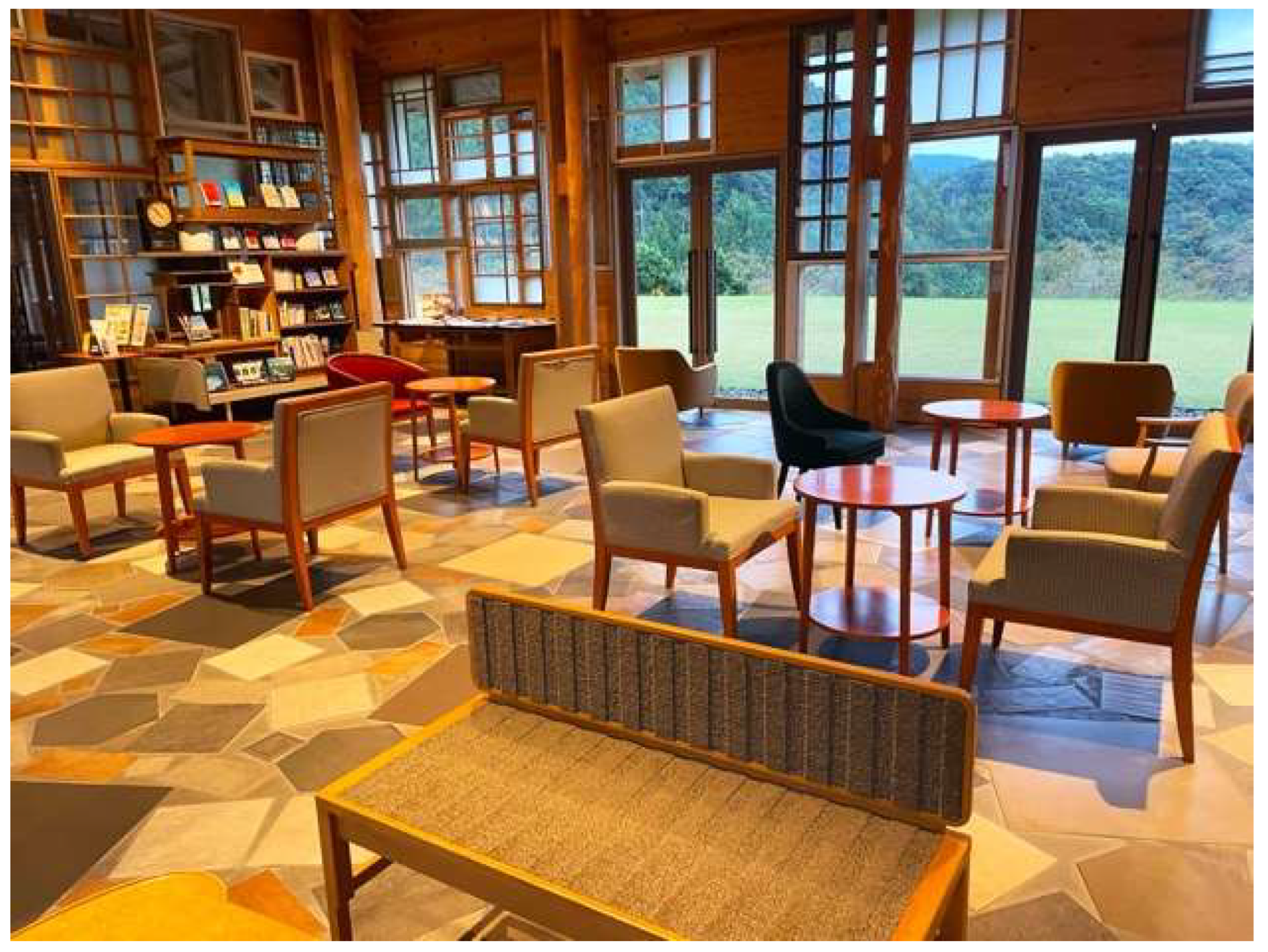
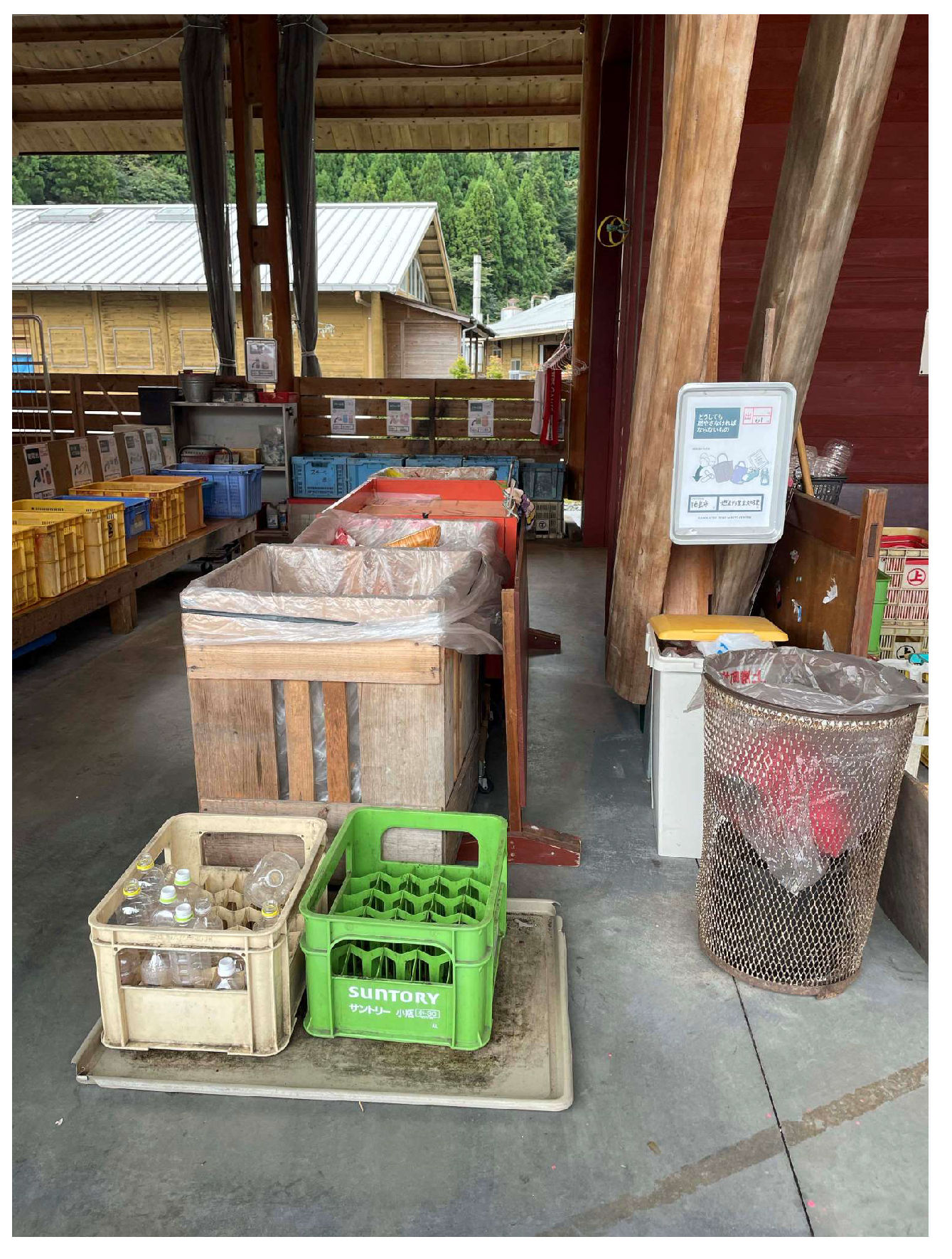
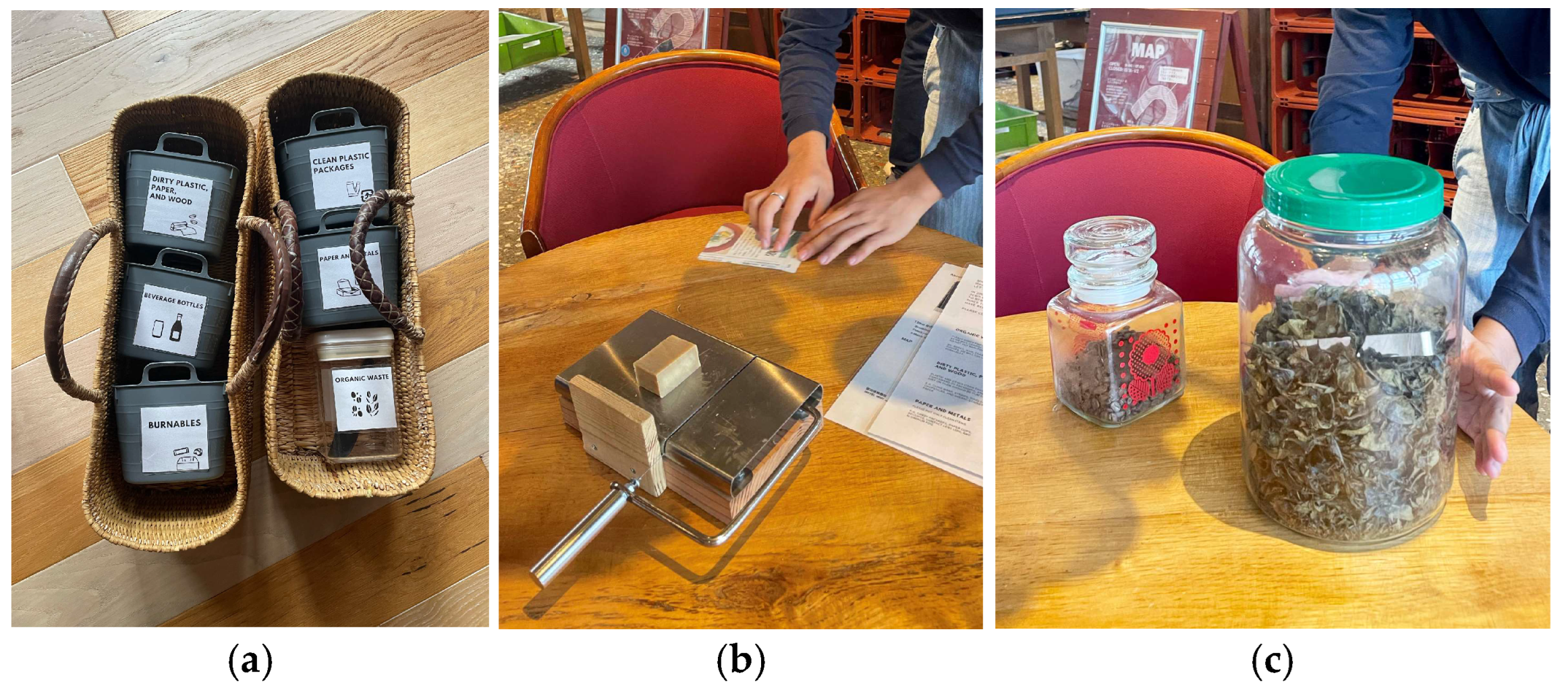
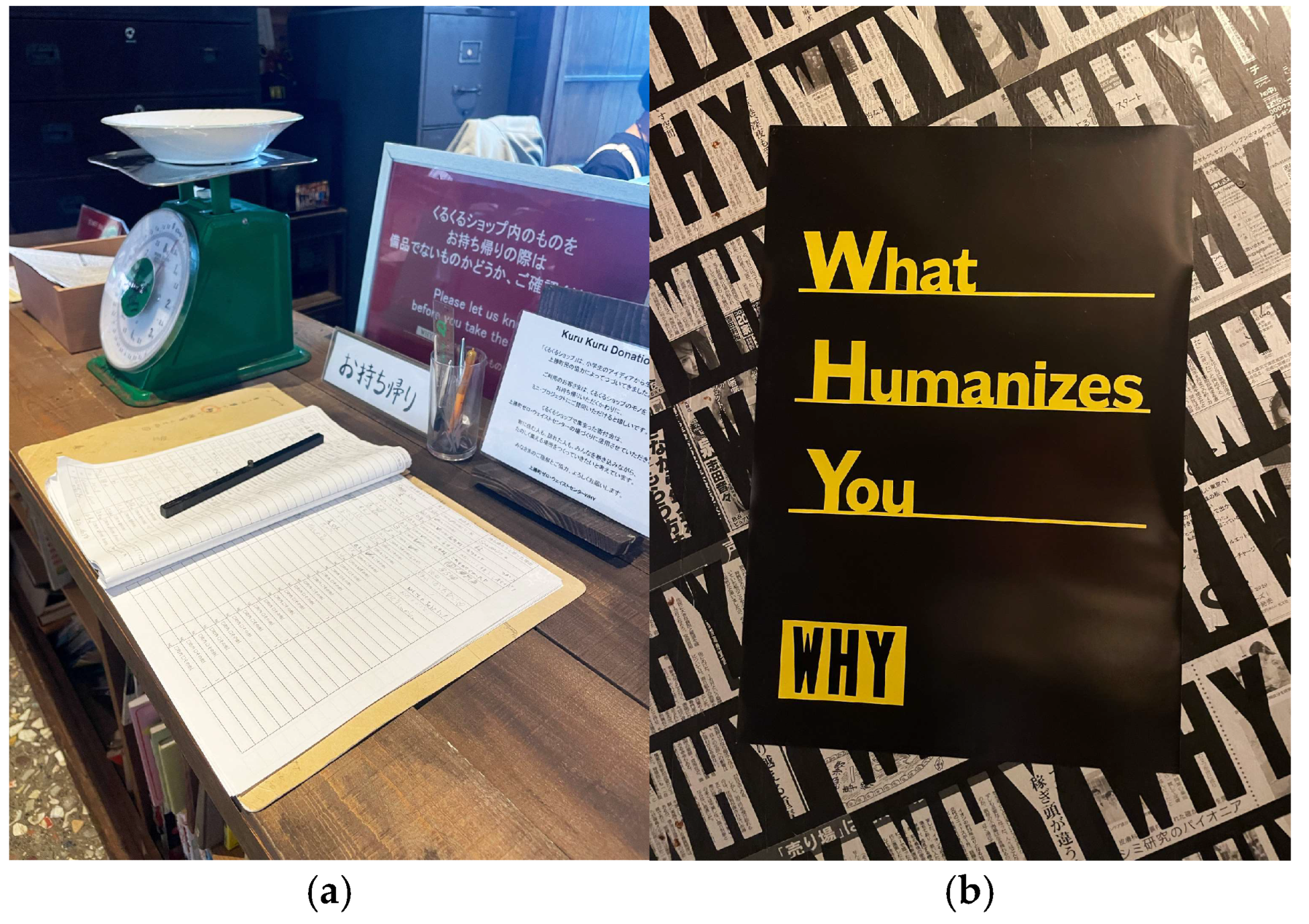
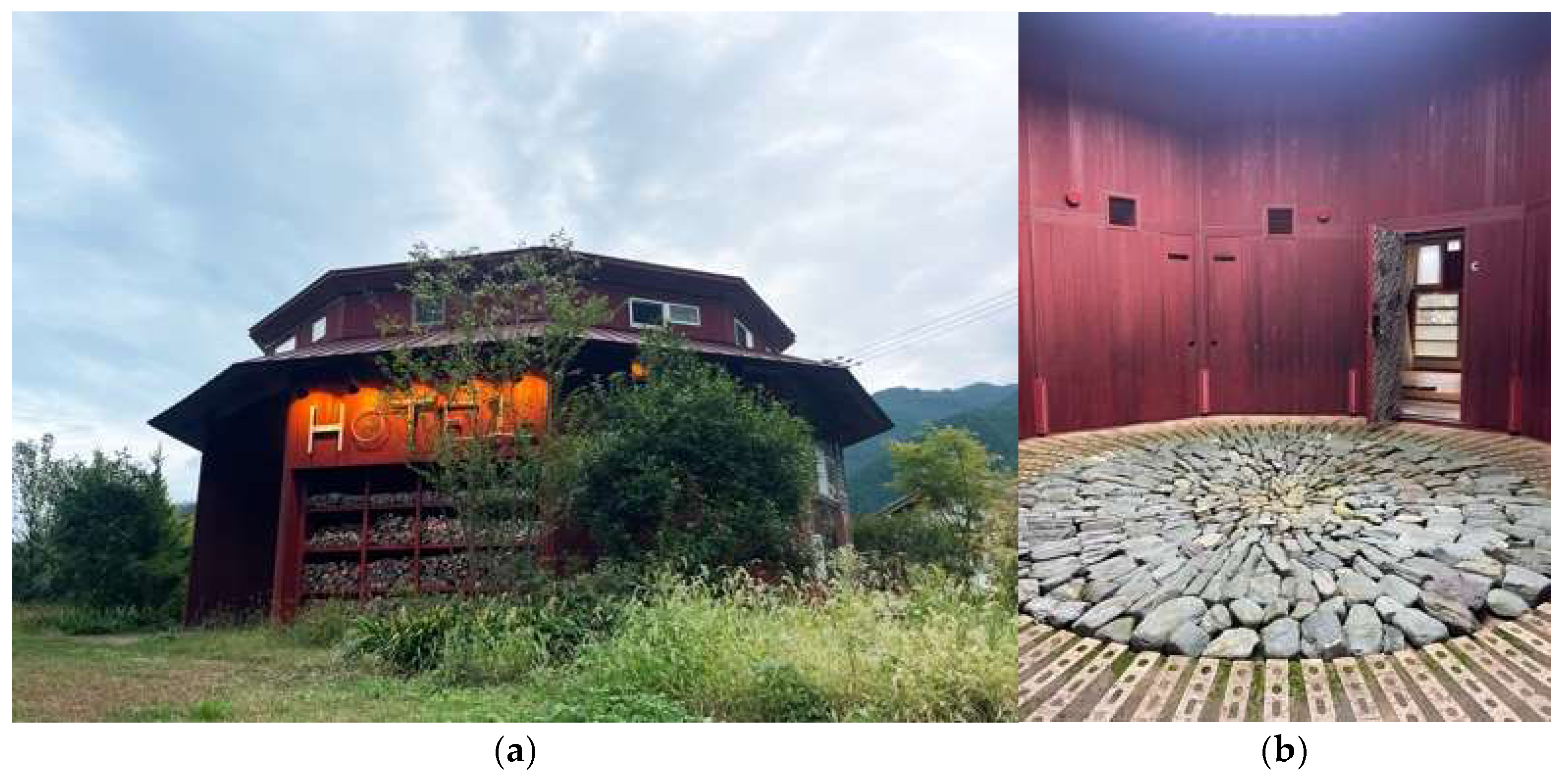
| Paper | Plastic | Bottles |
|---|---|---|
| Newspapers Cardboard Magazines Paper packs (white) Paper cups Paper packs (silver) Hard paper cores Shredder paper Unrecyclable paper | Plastic packaging Other plastic Pet bottles Plastic caps | Transparent bottles Brown bottles Other colored bottles Beer bottles |
Disclaimer/Publisher’s Note: The statements, opinions and data contained in all publications are solely those of the individual author(s) and contributor(s) and not of MDPI and/or the editor(s). MDPI and/or the editor(s) disclaim responsibility for any injury to people or property resulting from any ideas, methods, instructions or products referred to in the content. |
© 2025 by the authors. Licensee MDPI, Basel, Switzerland. This article is an open access article distributed under the terms and conditions of the Creative Commons Attribution (CC BY) license (https://creativecommons.org/licenses/by/4.0/).
Share and Cite
Fagerholm, A.-S.; Haller, H.; Warell, A.; Hedvall, P.-O. Zero Waste for All? Sustainable Practices in a Small-Scale Zero Waste Community from a Universal Design Perspective. Sustainability 2025, 17, 4092. https://doi.org/10.3390/su17094092
Fagerholm A-S, Haller H, Warell A, Hedvall P-O. Zero Waste for All? Sustainable Practices in a Small-Scale Zero Waste Community from a Universal Design Perspective. Sustainability. 2025; 17(9):4092. https://doi.org/10.3390/su17094092
Chicago/Turabian StyleFagerholm, Anna-Sara, Henrik Haller, Anders Warell, and Per-Olof Hedvall. 2025. "Zero Waste for All? Sustainable Practices in a Small-Scale Zero Waste Community from a Universal Design Perspective" Sustainability 17, no. 9: 4092. https://doi.org/10.3390/su17094092
APA StyleFagerholm, A.-S., Haller, H., Warell, A., & Hedvall, P.-O. (2025). Zero Waste for All? Sustainable Practices in a Small-Scale Zero Waste Community from a Universal Design Perspective. Sustainability, 17(9), 4092. https://doi.org/10.3390/su17094092








